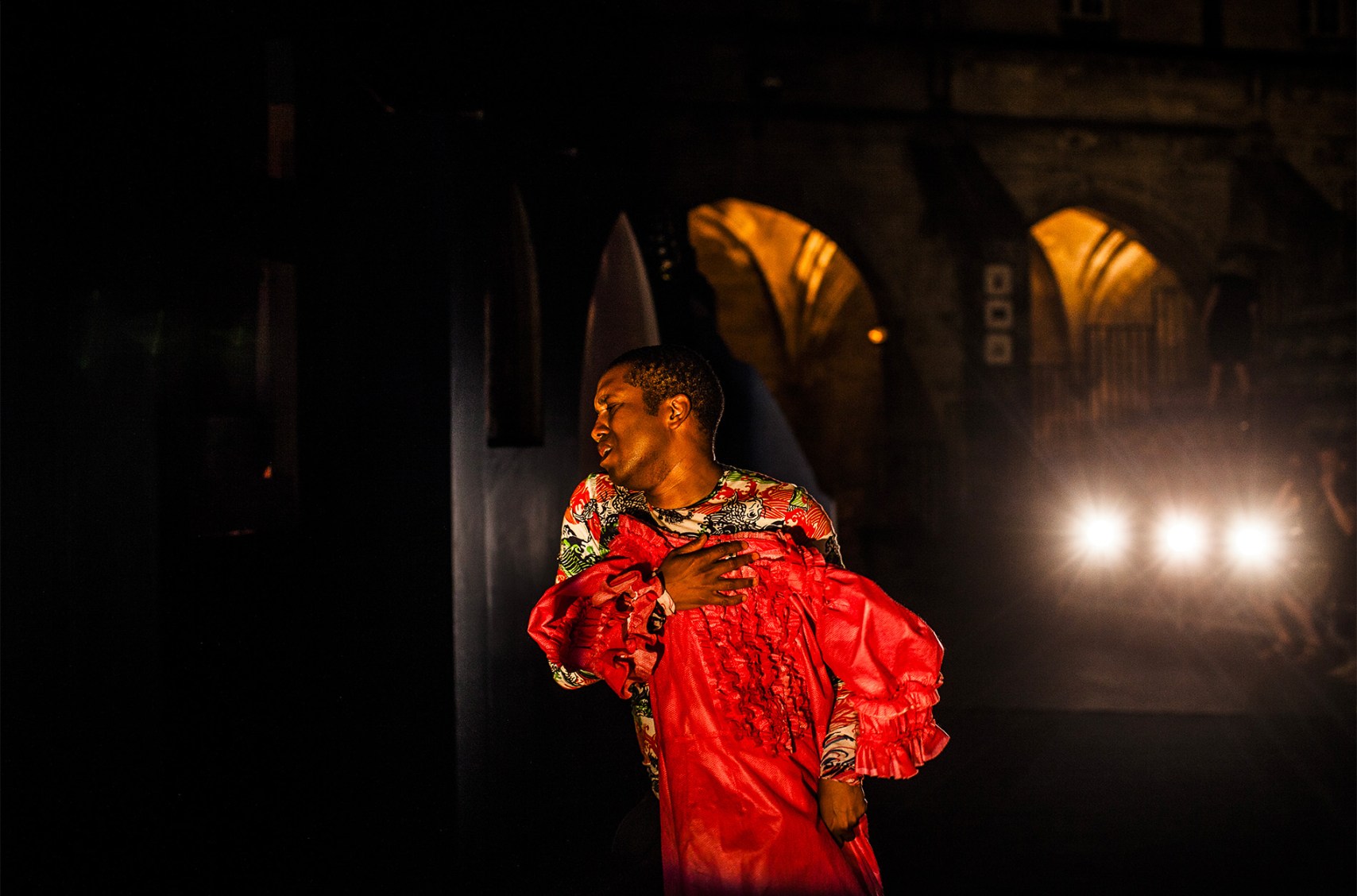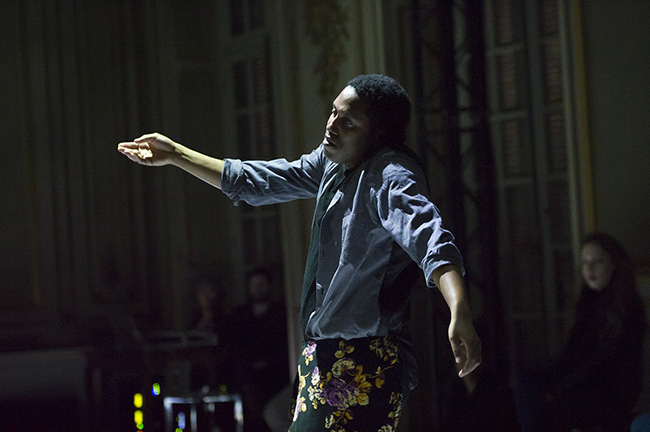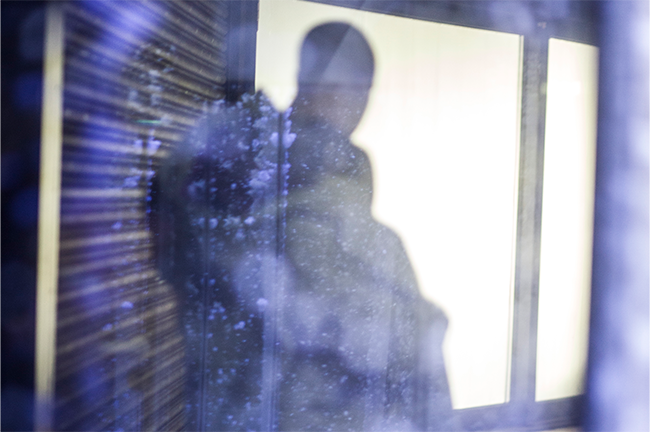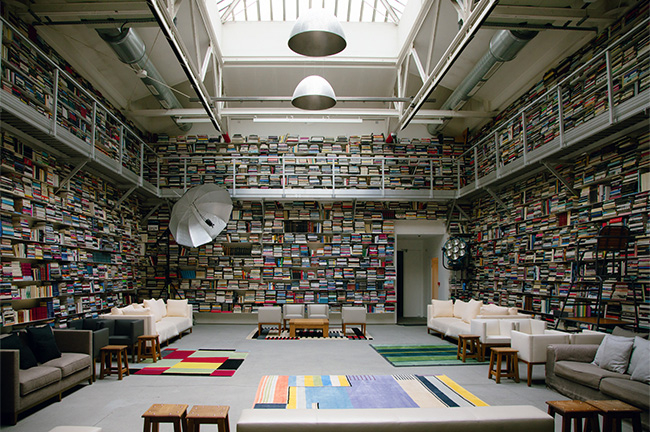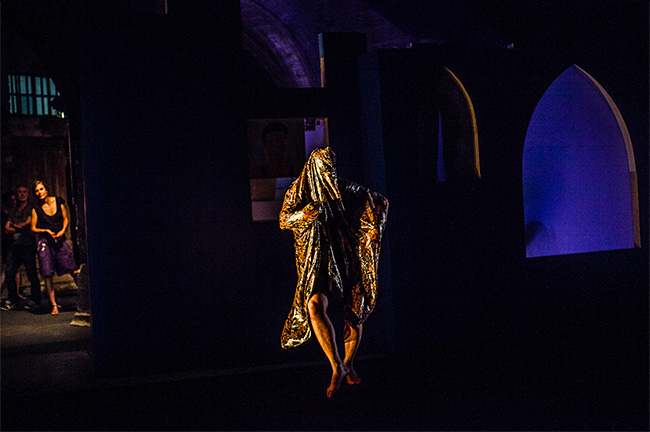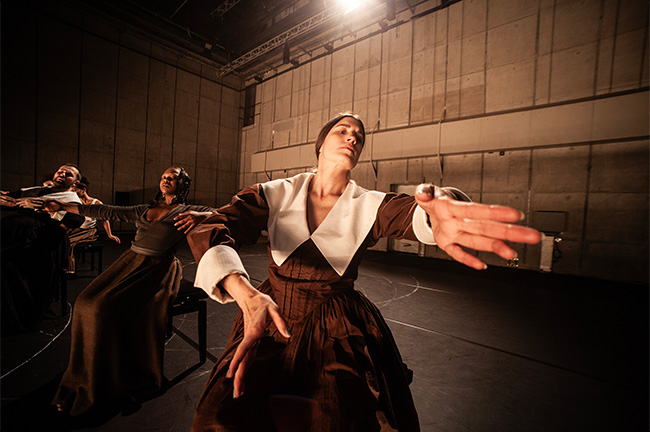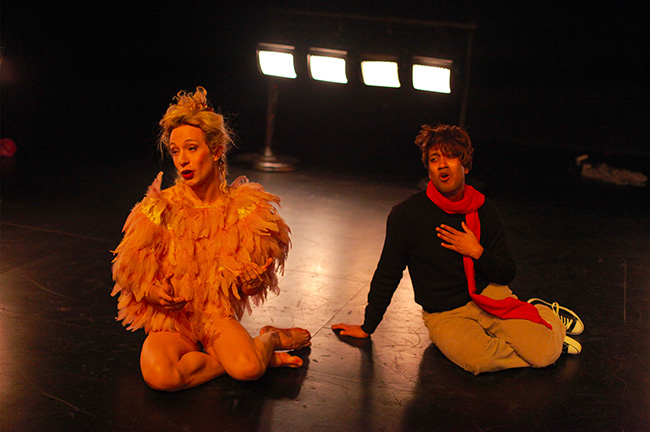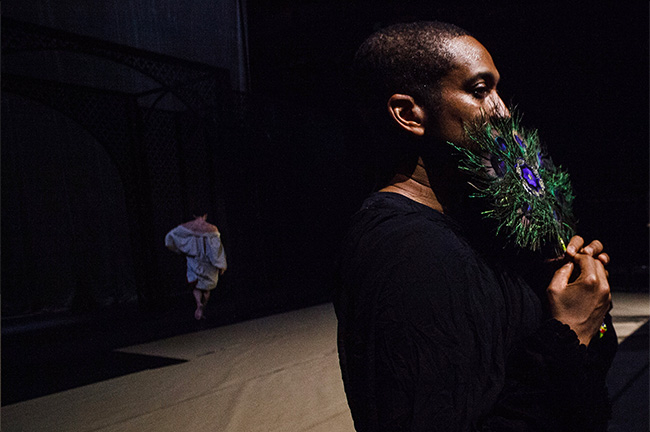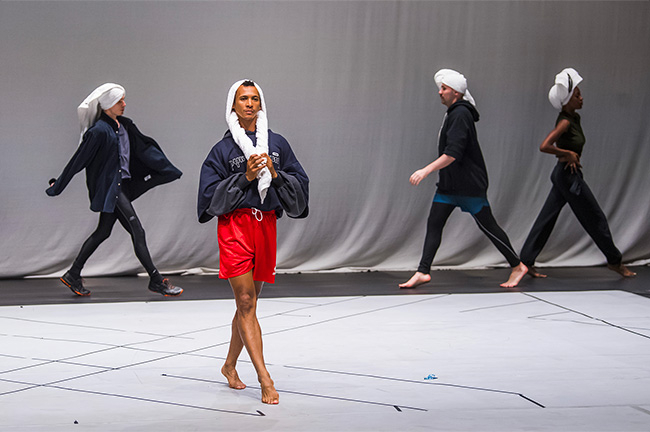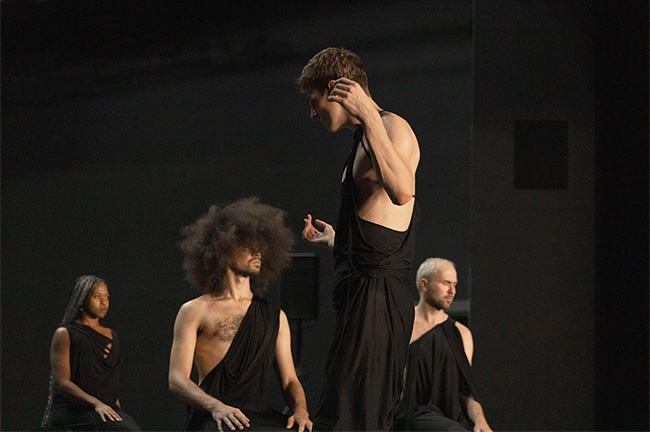What does this Portrait represent for you?
Lots of things. Following on from the United States, France was the first country to support my work. The Festival d'Automne, with Marie Collin in the past, and now Francesca Corona, has accompanied me in my journey and has never hesitated to give me feedback on my creations. It means a lot to me. The pandemic resulted in some of my pieces not being shown in Paris. I had the impression that there was something missing between Dancer of the Year (2019) and The Köln Concert (2022). Making up for this lost time is important to me. It is not really question of "coming home", I would prefer to say that I am picking up on the dialogue with the Festival d'Automne audiences. The sanitary crisis brought a halt to so many different rendez-vous.
Do you see your creations as a constantly evolving repertory?
Certainly, in that the pieces are connected to different eras and areas of research. I cannot always predict where that is going to take me. Sometimes there is only one aspect of the research that I want to show. There is definitely a research trajectory that unfolds. Thus, my interest in butoh has been going on for ten years now, after voguing and post-modern dance. This "Hijikata" phase has been keeping me busy since 2013. I am giving myself two more years to "cover" this aesthetic period. I have done much travelling on the spot, as well as in Japan, where I consulted the archives of Tatsumi Hijikata and Kazuo Ôno. To a certain extent, the Twenty Looks or Paris is Burning at The Judson Church series gave me visibility. This Portrait, featuring works that are mostly linked to the Hijikata period, provides me with more. I am coming to the end of a period.
In what way has your training, at the Trisha Brown School (TBS) and at City College in San Francisco, influenced your creative work?
Good question! Paradoxically, in relation to my early days at the TBS, the spirit of the research was based on the body techniques such as Release Technique and the Susan Klein Technique. I was not really into that particular school of thought. Instead, what I discovered was the possible relationship between voguing and the beginnings of modern dance. I was also in touch with what was happening in Europe, and the field of conceptual dance.
What I perceive in my work is the sharing of movement styles that I experienced with my own body and those I experienced with the dancers. Creating my own technique is not what I am interested in, unlike what Trisha Brown or Merce Cunningham did. It is not my thing. I am more interested in sharing, but differently. There was always a real sense of exchange of body experiments during those years in New York, via workshops and discussions. In a number of ways, all of this finds itself in my approach. It took me a long time to understand how to share with others my discoveries linked to the body. Such as how not to mime, and how to become yourself. There was a big “separation” between the movements that I was creating for myself and the choreographies I was making for the dancers. I was creating solos and was not sharing my physical language. I needed to find a way of not undermining the power of the performers, and of turning their individuality into one of their strengths.
Has contemporary dance become a field for exploration and crossover?
We do not know what the contours of contemporary dance are, which is why the story of the past constitutes such an important research field. I move closer to the future by studying what happened beforehand.
Do you see yourself as an archivist of movement?
My work is research-based. But I do not conduct research in a traditional manner. I do not set off in search of a dance and then reproduce it onstage exactly as it is. The key is to find “inspirational” tools. When you found a company, and the direction your work takes gives you an opening in the different institutions, or you are asked to do a “Portrait”, you bring with you a heritage of some kind. People in museums have started to ask me how they could set about collecting my work, how to keep it, preserve it. These are questions that you have to negotiate with. Though this does not concern all creative works, how can a piece be preserved? There is an organisation in your work on which you must work. Even if I do not follow a classification system, I am aware that I must go forwards, and move on to another period after the current Hijikata one, the same as before the Twenty Looks period. There is something sad about leaving these rituals behind, such as my customary trip to Japan every year. But I have to move on. To a certain extent, I have already moved on.
Your approach sees a fusion between underground culture and erudite culture.
Voguing, which has taught me so much, has now become much less underground since it has become visible in TV series and the organisation of shows in all European capitals. On the contrary, post-modern dance continues to be little known beyond a limited circle. One thing I know for sure is that I am interested in history which has not been written. From this base you can discover what is not visible, or what has remained underground. But this does not mean that I have a system which consists of blending these cultures. The history of movement linked, in particular, to the female body has meant that it has been able to survive as non-written history. I do not class things in terms of the interest that I can bring to a particular current, I move on.
You were one of the first choreographers to be interested in voguing, and which is now present in many creations
Why is ball culture still so strong in the times we live in? It is because what really counts for those that bring it alive is the spirit of the House, the competitions. You can invite them to a show and they will come, but that is not what is essential to them. I started frequenting ball culture in and around Harlem in the late 1990s. Now there are ballrooms more or less everywhere, the environment has changed. But the Houses remain inclusive places in which no one is refused entry. For 10 years I did not speak to anyone involved in the ball culture scene, I observed. I knew that I did not want to reproduce voguing, as I had too much respect for the spirit of these places. More than anything, I never felt that I was unwelcome there.
In what way has the Schauspielhaus Zurich Dance Ensemble that you have been directing since 2019 changed your way of creating work?
It has not changed me as an artist but, by the same token, it does alter many things. Building up company brings with it a certain stability in terms of knowledge and skills. It is not just about a relative comfort, it is a matter of being able to think more and having renewed confidence. Having fifteen performers on the stage, and undertaking a trilogy is only conceivable when you have a base of some sort to back you up. Being in an institution like the Schauspielhaus Zurich is a completely different situation. Doing twelve in-house performances of The Romeo gives me the freedom to dig deep into things. But that also means more responsibilities, so I have to find the right balance. Ultimately, in answer to your question, I always remain faithful to my creative method. And that means still taking just as many risks. You need to feed the institution without it gobbling you up. It is comforting, though never easy. That said, I have no intention of doing it all my life, I am too fond of my independence.
Some of your recent shows centre on the theme of death.
It started with my research into butoh, I think. Its nickname is the “dance of darkness”. As a young person, growing up in the south of the United States, I had already been confronted with death rituals. But butoh gave me something more, a whole field of exploration. Death is always present in our lives, even if we do not want to see it. It is something that we must carry with us or allow others to carry. In my work, I try to create a space in which the audience is encouraged to live with it. After all, this is what Greek tragedy did. We should live on this precipice between life and death, shouldn’t we? There are different ways of approaching it... In art we want to give hope. But in doing so, should we hide despair, the pathetic and the old? It is part of life and thus part of what happens onstage. In India, everything is on show, nothing is hidden. In our western culture, the tendency is rather to hide, stash away. The grief you carry within you can be used to make a celebration. As a child at church, I saw people shed tears of both laughter and joy.
You have stated that you dance with a butoh spirit. What does that mean?
It is not a prescription or category. It is more of a mentality. Most dancers rely on their strength, for my part I want to use my weaknesses, my fragility. It is important, in a society like ours, based on productivity, to show something else.
(M)imosa is also part of this Portrait.
We were so young in 2011 when we created it, Cecilia Bengolea, Marlene Monteiro Freitas, François Chaignaud and me. It is like a family coming back together, finding each other once again. Even if over time, we no longer saw each other, and conflicts arose. There is a joke between us which consists of imagining a version of (M)imosa on wheelchairs. Jokes aside, (M)imosa is very much linked to the era we live in, which is something that cannot be reproduced. (M)imosa is 4 performers, 4 authors. Our complexity went into the making of the piece.
Is it always a pleasure for you to be on the stage? Or has this feeling evolved?
Creating a project is about finding a link with the audience. Whatever the subject is. This encounter with the audience is primordial. The moment when the audience comes into the theatre is a very special one and I like to be on stage to witness it, to experience it to the full. During the pandemic, we lost this link, this contact. Theatre was on the brink of escaping from our grasp, we were going to lose it and with it, the link it set up. After all, what happens in theatre is very simple: over the course of a few moments, we share the same page of our imaginations. And when it works, for both audience and performers alike, it's magical.
Are you both a dancer and choreographer?
I knew I would be a choreographer who dances. Even if for a long time now, I have the impression of living on the road, far from my family, and my partner. Sometimes I say to myself that I would like a second act, or another life. I know the day will come when I will stop dancing, and I will also stop being a choreographer.
What do you look for in a performer?
When I was studying at the Trisha Brown School, I noticed that the other pupils liked the humility of dance. It used to drive me mad. For me, if you go onstage, you should be seen. My dance is not made for hiding away, on the contrary.
Does the community spirit define your approach?
Undoubtedly, even though we might be different from each other, my performers and me. A major part of my creative work came to fruition before there was a language to qualify it. At that time there was little talk of fluidity, or non-binarity. But we have always taken care of each other.
Interview by Philippe Noisette, April 2023
Portrait Trajal Harrell is presented with the support of Dance Reflections by Van Cleef & Arpels.
France Culture is a partner of Portrait Trajal Harrell

